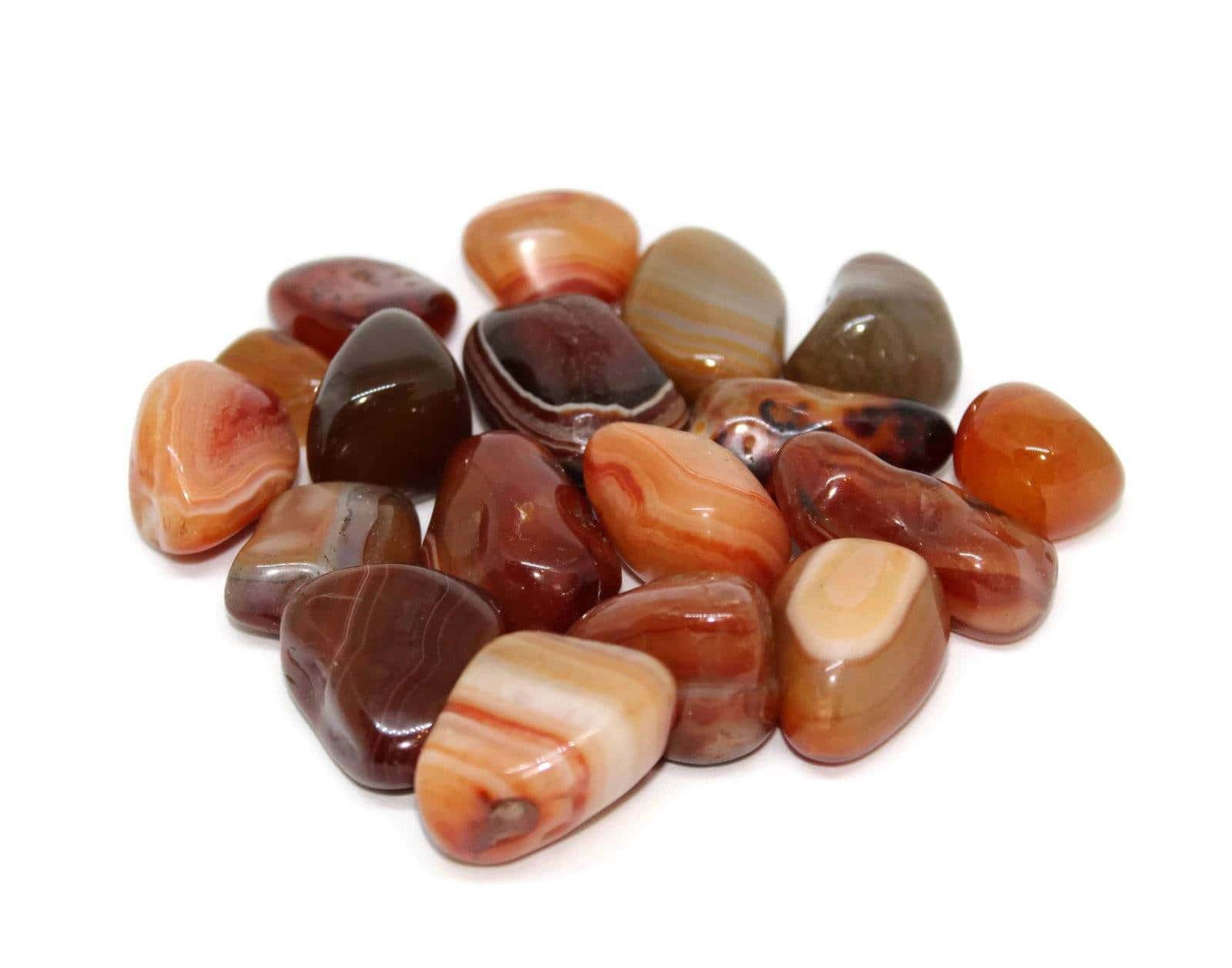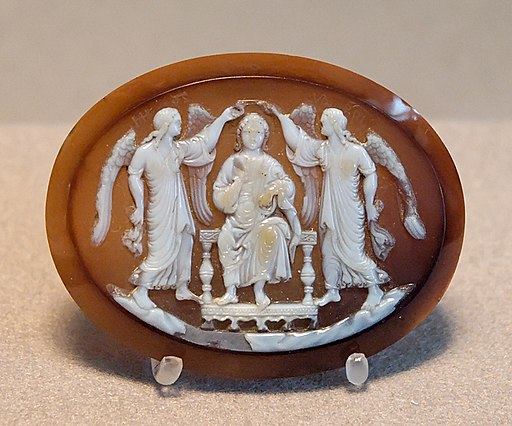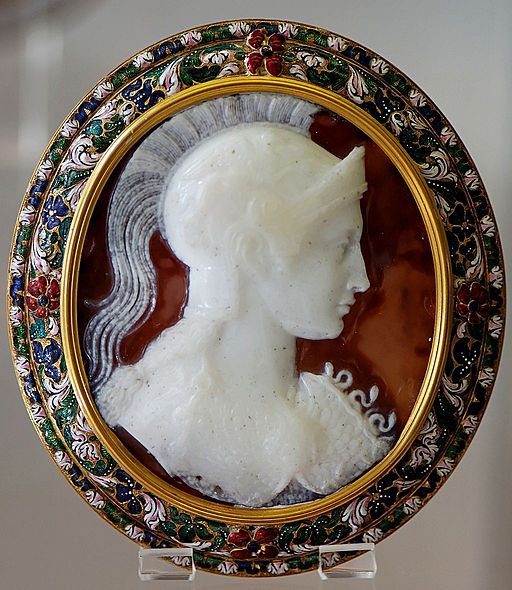Sardonyx
Sardonyx is a geological oddity of a stone – essentially, it is Sard mixed with Onyx. The red Sard creates an interesting contrast between the white or black Onyx.
Sardonyx has been used since antiquity for various things, including seals and cameos and other decorative objects made by the Assyrians, Romans, Greeks and Phoenicians. It is a perfect stone for carving hard cameos, as it has very contrasting layers.
Appearance, Uses and History
There is a huge amount of confusion around what Sardonyx actually is.
Sard is a brown to brownish red, transparent to translucent variety of Chalcedony.
Onyx is a form of Chalcedony, sometimes used to describe solid black or banded black and white Chalcedony.
Agate is a multi coloured banded form of Chalcedony.
Chalcedony is a microcrystalline variety of Quartz, and occurs in many varieties.
Carnelian is a dull red variety of Chalcedony.
Sardonyx, specifically, is a mixture of Sard and Onyx, consisting of parallel bands of brown, white, and red, sometimes with black bands. It could be considered an Onyx or an Agate depending on specific definition.
This material has been mined or gathered since around 2200BCE; throughout most of recorded history it has been used as lapidary material for bas-relief art; otherwise known as ‘low relief’.
This is a technique in which the design and details are barely more prominent than the overly flat background. In this case, Sardonyx is carved so that the background layer is a different colour to the details.
It is used for hardstone cameos, which are harder wearing than shell based cameos. It was a popular material for making seals and signet rings, as apparently hot wax does not stick to the stone.
Locales
The best source for contrasting Sardonyx is India, although there are deposits from Brazil, Germany, Madagascar and the USA.
Mineralogy
Photos of Sardonyx
Hazards and Warnings
Almost all rocks, minerals (and, frankly, almost all other substances on earth) can produce toxic dust when cutting, which can cause serious respiratory conditions including silicosis.
When cutting or polishing rocks, minerals, shells, etc, all work should be done wet to minimise the dust, and a suitable respirator or extraction system should be used.
Translations
Arabic:
- الجزع العقيقي
Hindi:
- गोमेदक
Portuguese:
- sardônica
- sardônico
Bengali:
Indonesian:
Punjabi:
English:
Italian:
- sardonica
Russian:
- сардоникс
French:
Japanese:
- サードニクス
Spanish:
German:
Korean:
- 사도 닉스
Thai:
Gujurati:
Mandarin and Traditional Chinese:
- 缠丝玛瑙
- 纏絲瑪瑙
Urdu:






